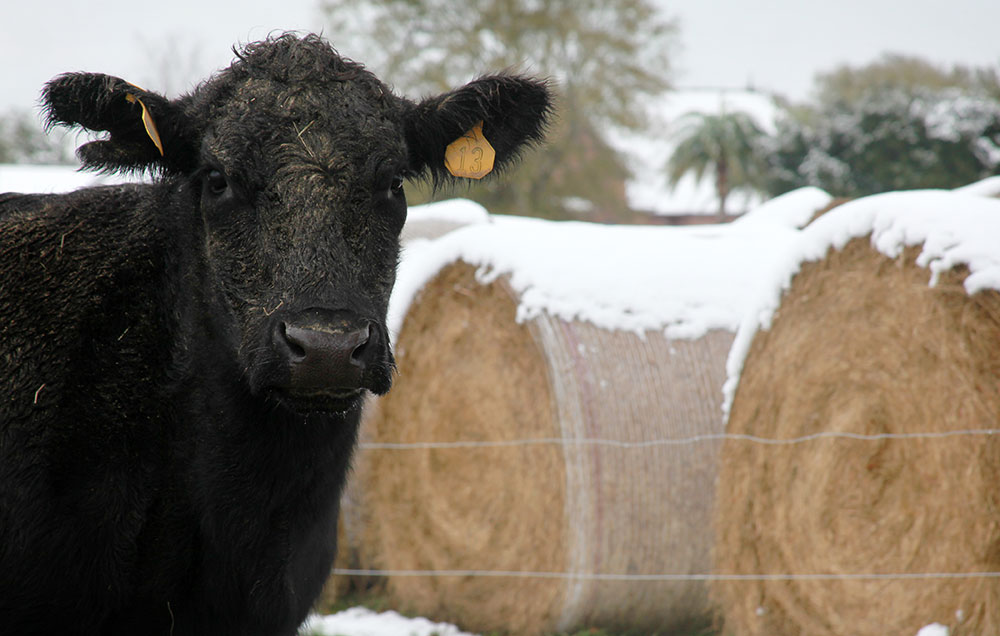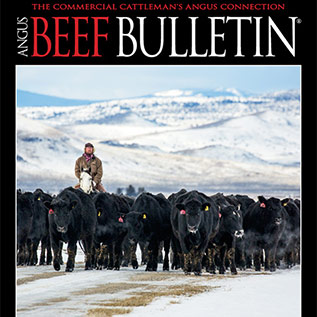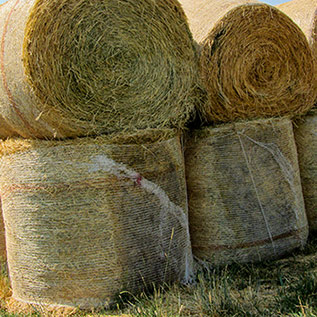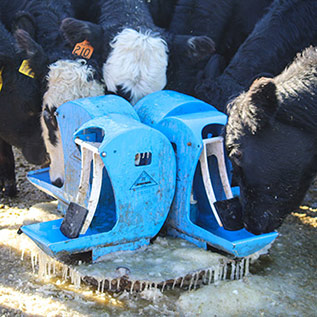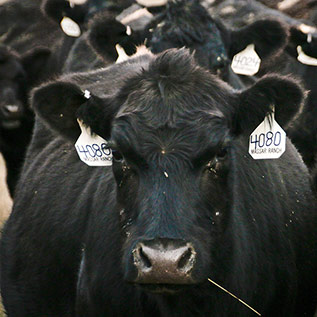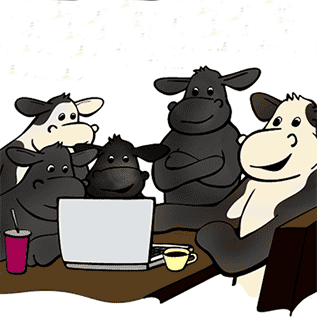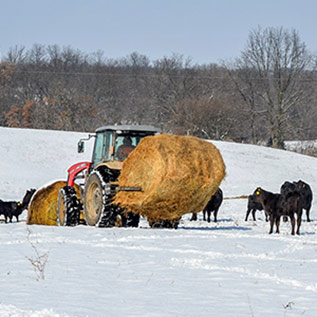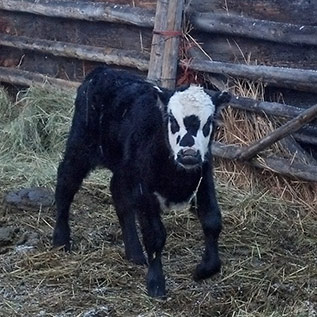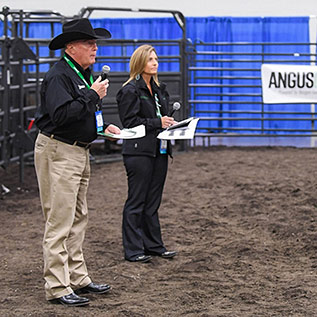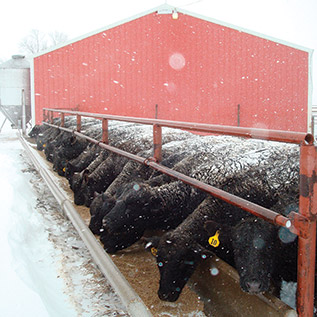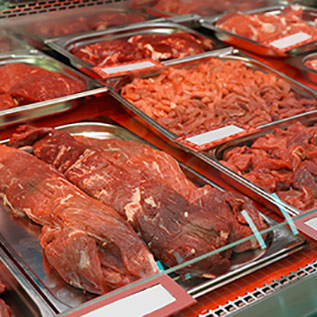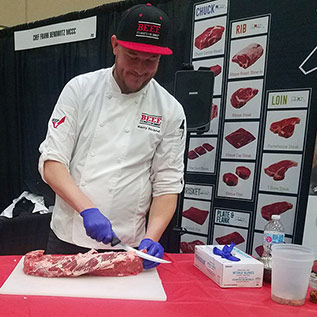How Much Hay Will A Cow Consume?
Estimating a cow’s forage needs is imperative for winter feeding.
Estimating forage usage by cows is an important part of the task of calculating winter feed needs. Hay or standing forage intake must be estimated in order to make the calculations. Forage quality will be a determining factor in the amount of forage consumed. Higher-quality forages contain larger concentrations of important nutrients, so animals consuming these forages should be more likely to meet their nutrient needs from the forages. Also, cows can consume a larger quantity of higher-quality forages.
